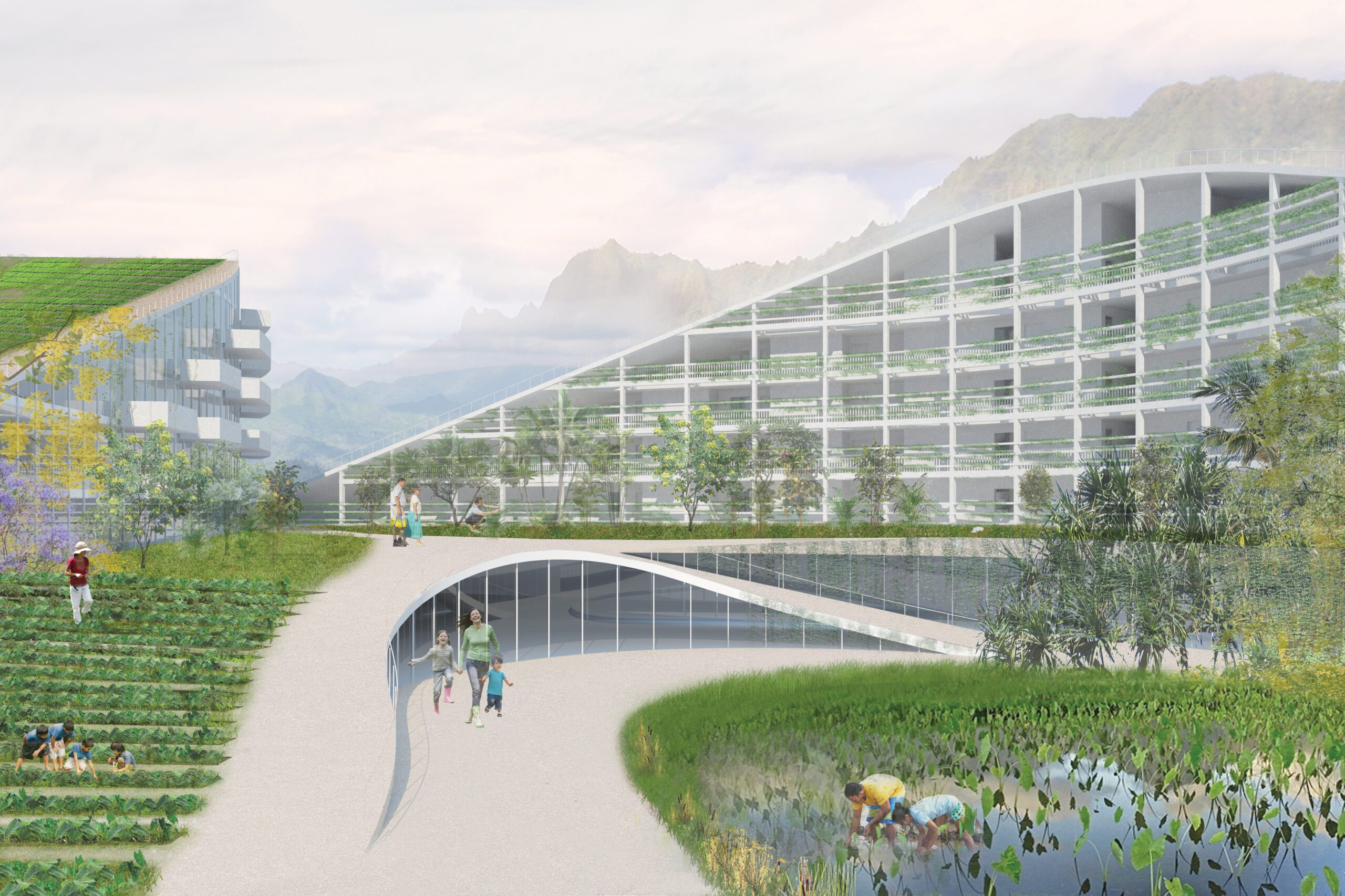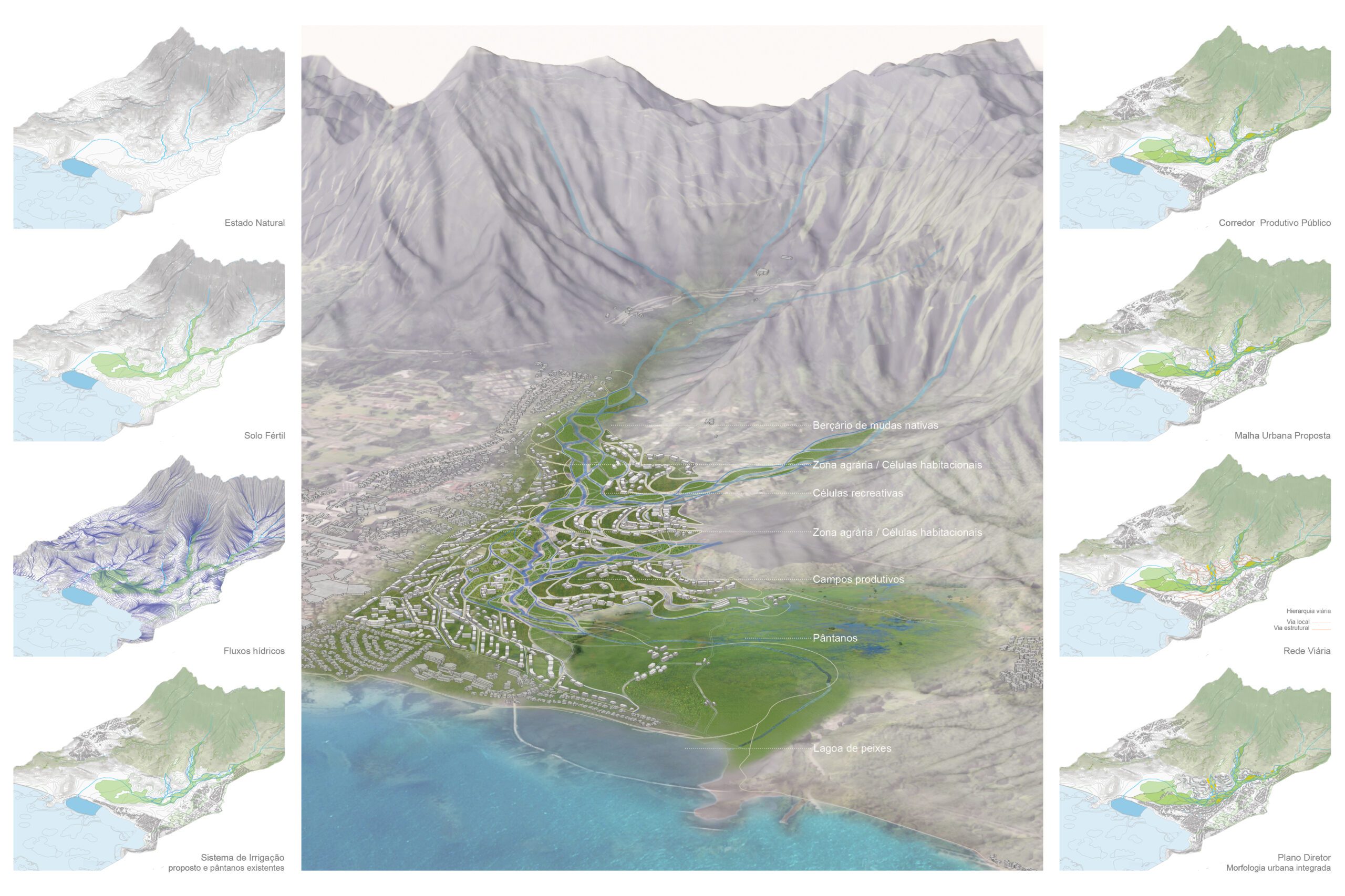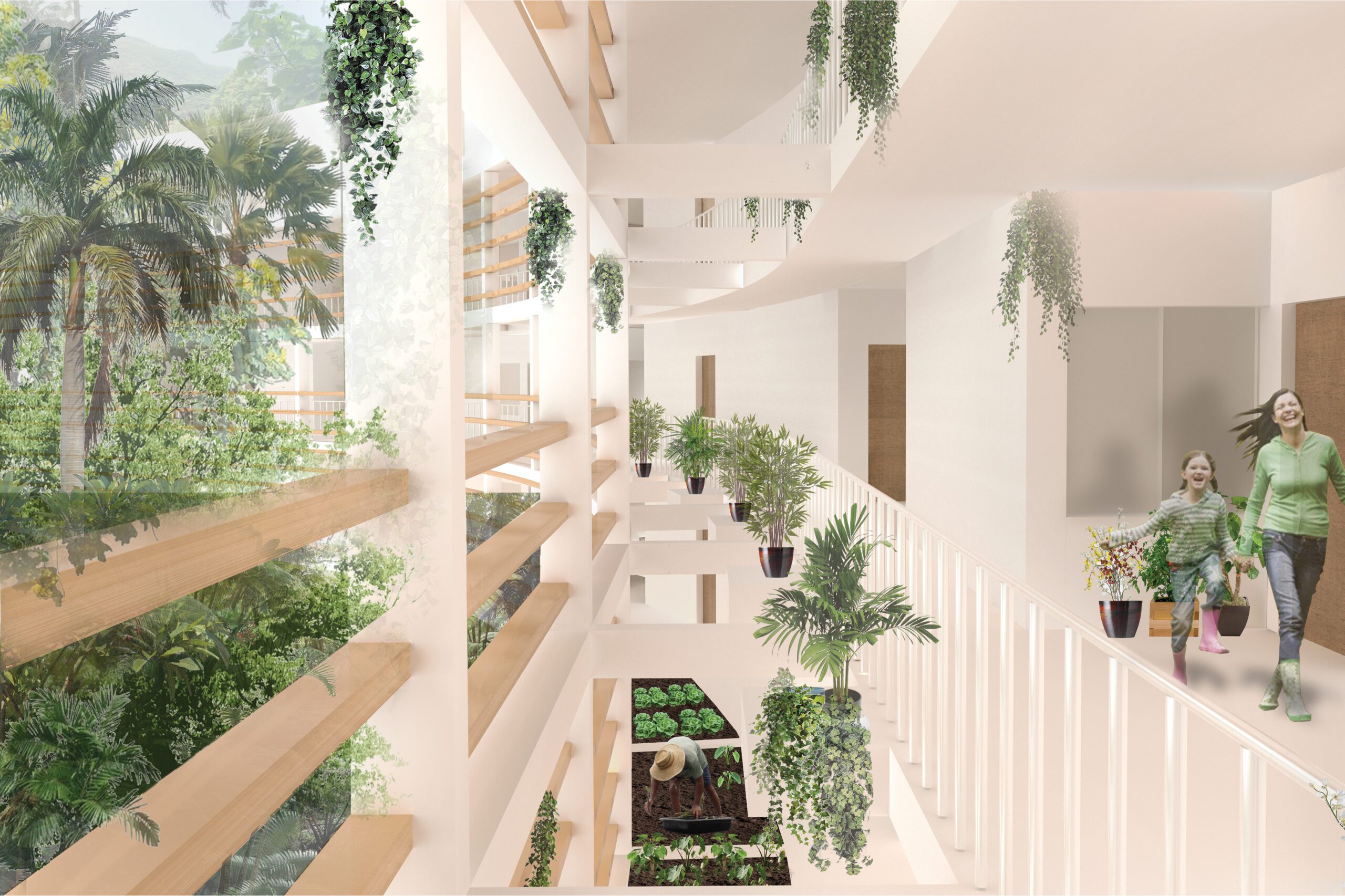Project implementation: USA
Project development: USA
This project investigated the relationship between food, architectural, and urban systems within the context of sustainable and self-sufficient agricultural production in Hawaii. Despite being the only US state with a 12-month agricultural season, the island currently has only 10 days of food reserves if its air and/or sea connections with the mainland are compromised. In this same remote context, approximately 1,000 years ago, the Ahupua'a, a traditional natural resource management system, was created. In this system, ecological elements organize and feed back into each other in a vertical band extending from the ocean to the mountains. Within the geological section, through the coexistence of habitation and land cultivation, the system transforms the watershed into an intensive technological platform for food production. Before the European invasion (1778), several of these systems were fully functional and supported an estimated population of 800,000. Currently, only a few fragments such as lagoon fields (Lo'i), fishponds (loko) and dry land terraces (Kuaiwi) can still be found scattered throughout the islands.
To synchronize demands for urbanization and food production with vernacular strategies and management of environmental conditions in the river basin and ocean, the proposed master plan aims to optimize the existing production system, mediating the development of its urbanization, assuming the role of a support system. By introducing food production at the neighborhood scale through the manipulation of the existing relief, the architecture and landscape become an integrated system.
The new urban morphology enables water purification and retention for irrigating urban gardens. The proposed system also redesigns the river's course, responding to parameters such as topography, rock formation, and existing vegetation. By creating streams and retention/treatment ponds for irrigating crops integrated into the housing system, ecological buffer zones are established, thus promoting sustainable densification of the urban periphery adjacent to environmentally protected areas.
The challenges faced by Oahu with the growing pressure for urbanization in areas of environmental value are not unique: countries in the global South, such as Brazil, could benefit from a territorial organization system like Ahu'pua. Many islands and bays in Brazil also have conditions very similar to Oahu: a tropical climate, mountainous terrain, with freshwater streams, and sufficient river precipitation to support crops without mechanical irrigation. Some notable examples are the islands of Florianópolis, Fernando de Noronha, and the Ilha Grande region. The latter, in particular, has been experiencing significant pressure for urbanization, especially due to the tourism industry.




